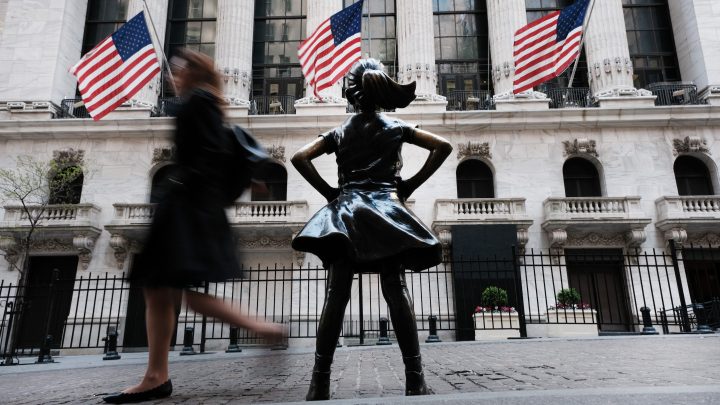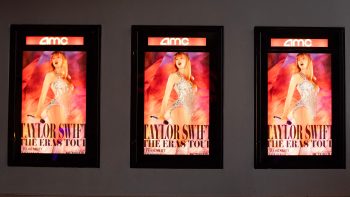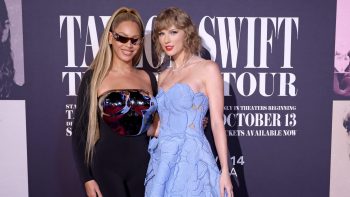
In the “girl” era, are women really splurging for fun?
Share Now on:
In the “girl” era, are women really splurging for fun?

Unequivocally, 2023 was the Year of the Girl. The Barbie movie blew up, Beyoncé and Taylor Swift music tours boosted local economies, and girls ruled the internet. By 2028, women will be in charge of 75% of discretionary spending, Nielsen, a media research firm, projected. According to Nielsen, that makes women “the world’s greatest influencers.”
As more marketing is done through social media, brands are targeting obscure “girlie” niches: the corporate girlies, the fitness girlies, the ADHD girlies, the IBS girlies, the hot-girl-walk girlies, the tinned-fish girlies. Even the Super Bowl was “all about the girlies.” After all, women run this economy, right?
Not exactly.
Despite all the flashy marketing trends — and the fact that women do make most daily financial decisions in opposite sex couples — women don’t generally outspend men. On top of that, persisting systemic barriers keep women from accumulating wealth at the same rate as men, and many women remain economically disadvantaged.
A primary disadvantage women face is the income gap: In the U.S., women earn about 82% of what men make, Pew Research Center found. That hasn’t changed much in the past 20 years, and is worse for Black, Latina and Indigenous women.
The gender wealth gap is a bit trickier to measure since wealth in the U.S. is measured by household, but research shows it is even wider than the income gap. For never-married individuals, there’s a gap of 68 cents per dollar between men and women, said Ana Hernández Kent, a senior researcher for the Institute for Economic Equity at the Federal Reserve Bank of St. Louis.
“Income is more transitory. It’s kind of like, ‘How are you doing right now?’” she said. “Versus wealth is, ‘Can you invest in yourself in the future? Can you invest in your kids? Can you help them with a down payment on a house? Can you do that for yourself?’”
Since the pandemic began, lower-wealth groups saw larger percentage gains in their wealth than their higher-wealth counterparts. Hernández Kent said that’s primarily because it’s easier to double your money if you only have a small amount saved to begin with. In dollar terms, the gap between low and high wealth groups grew, she said.
These gaps are reflected in spending: Unmarried men spent, on average, a bit more than unmarried women in 2022, according to the latest Bureau of Labor Statistics data. Eighteen to 25-year-old men outspent women in the same age group by more than $3,000 per year — those are Gen Zers, who recently coined the term “doom spending” to describe their generation’s version of retail therapy.
So why aren’t we inundated with articles about the boy-conomy?
That same BLS data does show that single women spend a bit more than single men of a similar income level. But often, women bear extra financial burdens. For example, single mothers are much more common than single fathers, and children aren’t cheap — single mothers often have little savings.
Women also outspend men on apparel and related services. That also isn’t necessarily by choice. Studies have shown the positive relationship between attractiveness and income, but one 2016 study took it further: Controlling for personal grooming eliminated the beauty wage gap in women, meaning practices like daily makeup and hair maintenance significantly correlate to increased income for women. The same was not true for men, the study found.
The past few years have been strong for grooming spending — economic tough times are inversely correlated with cosmetic purchases and other little luxuries, like bows. These affordable splurges during times of economic stress (like, say, the past few years) could be one reason it feels like women are in the driver’s seat of the consumer economy.
Emily Mayer owns Bardot Bow Gallery, an Etsy shop that sells bows and other hair accessories with a focus on adult women. She knows better than anyone that a little goes a long way, especially in this economy. Her sales are climbing and bows are in.
“They’re like a fresh tube of lipstick. It’s just an easy way to throw your hair back and it doesn’t need to be complicated,” she said.
Another area in which women have no choice but to outspend men? Health care.
Women with employer insurance spend 18% more than men on out-of-pocket health care costs each year, Deloitte researchers found — that’s excluding maternal health-related services. Health insurance products tend to cater to male health issues and don’t cover female-specific screenings and procedures, the study showed.
Dr. Kulleni Gebreyes, a former attending physician and now Deloitte’s U.S. chief health equity officer, led the study. She described how this imbalance might play out: For a patient with abdominal pain, the range of possible diagnoses is much narrower for men than for women due to differing anatomy and risk factors. For each additional imaging test a woman needs, there is likely an additional copay.
“When we look at the ‘á la carte menu’ in which health care comes, once you get past the preventative costs, it’s designed as an all-you-can-eat for men more than it is designed as an all-you-can-eat for women,” Dr. Gebreyes said.
Her team is calling on employers to look at the health benefits they offer and adjust to more equitably cover womens’ health issues — reducing the gap between what men and women spend on their health. “We can all spend a lot of time admiring the problems, or we can figure out in our own lanes what actions we can take,” she said.
In addition to structural issues that make wealth accumulation more difficult for women than men, some research shows major differences in how men and women perceive finances: Men are more likely to see money as a form of power, whereas women see spending as an expression of love. Men are often riskier with their money whereas women are more likely to save. That’s according to Giulia Sesini, an economic psychology researcher.
Generally speaking, Sesini said, women are more impulsive shoppers than men. Her latest research reveals one reason for this impulsivity is internalized stereotypes.
“If for all your life, people keep on telling you that women are no good in finance, women are impulsive, women are so and so, you embody this stereotype — the stereotypical beliefs about yourself — and you act according to this stereotypical beliefs,” she said.
Financial advising aimed at breaking down these stereotypes could make a big impact, Sesini said.
All sorts of factors like the wage gap, psychology and sexist systems have created the perfect storm for women to maintain less economic power than men. So why all the buzz about the “girl economy”? Hernández Kent with the St. Louis Fed likes to use a different phrase: the she-cession.
During the pandemic, women’s unemployment spiked way more than men’s, and it took longer for women to return to the workforce, she said. It was a she-cession. Now, employment levels are roughly where they were pre-pandemic, meaning some women may be in a more stable place economically than they were in 2020 or 2021, and that is being celebrated by advertisers.
But being “back” doesn’t necessarily mean women have grown in their careers or are taking jobs that best match their skills.
“Women had made really strong growth in that three year period. In some cases, it was record growth. But that does not mean that they’re financially stable,” Hernández Kent said. “The wins should be celebrated. But also it should be with the lens of there’s still more to go, there’s still a long path to take to get to that equity point.”
This story has been updated to reflect Giulia Sesini’s role.
There’s a lot happening in the world. Through it all, Marketplace is here for you.
You rely on Marketplace to break down the world’s events and tell you how it affects you in a fact-based, approachable way. We rely on your financial support to keep making that possible.
Your donation today powers the independent journalism that you rely on. For just $5/month, you can help sustain Marketplace so we can keep reporting on the things that matter to you.


















